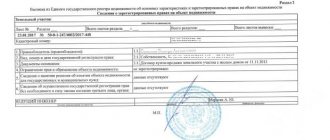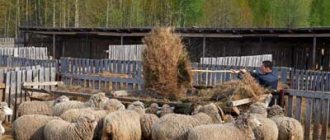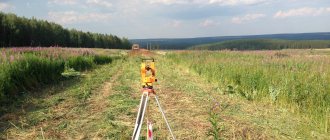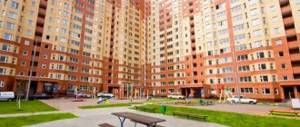Registration of a house under the dacha amnesty is the process of registering real estate with the state according to a simplified procedure. It was approved at the federal level back in 2006, and since that time amendments have come into force to significantly simplify the accounting of unauthorized buildings, country houses, extensions, and other objects for conducting business activities.
Federal Law No. 93 specified a boundary period until 2015; later the validity of the law was extended several times. The latest edition states that the dacha amnesty will last until January 2021, but an amendment was adopted that for the first time shortened rather than extended the validity of the law. Therefore, if you were planning to register your garden house under the dacha amnesty, you should not postpone this issue, since in the future registering housing construction projects will cost much more and take more time. Formally, the amendments reduced the amnesty until February 28, 2018, but the issue is being actively discussed, and there may be moves towards extending or shortening the period of validity of the law.
Registration stages
What do you know about independently registering a house under the dacha amnesty? How is the registration of rights to objects that fall under the dacha amnesty program carried out?
If, in order to confirm their rights to real estate, citizens choose a dacha amnesty, then the following algorithm of actions helps to register a house on a plot:
1)
any documentation is obtained confirming that the land plot was allocated legally (for example, a resolution of the local administration);
2)
a scheme for the location of a land plot on the territory of SNT is drawn up;
3)
you need to apply for the production of a technical plan for the building;
4)
an application for registration of property rights must be submitted to the Rosreestr institution.
Free transfer of ownership occurs simultaneously with registration in the Unified State Register of Real Estate (USRN); 5)
at the end of these procedures, the copyright holders receive an extract from the Unified State Register of Real Estate.
The list of necessary documentation for registering rights under the dacha amnesty differs when registering ownership of land plots or buildings.
Now you know the nuances of how to apply for a dacha amnesty for a residential building in 2021, and how the dacha amnesty is generally carried out through government services.
Real estate objects subject to amnesty
- Garden houses and residential buildings erected on plots reserved for gardening - if permission for their construction was not previously required.
- Garages, bathhouses, sheds and other outbuildings not suitable for business activities.
The law on dacha amnesty was adopted in September 2006. Its effect ended in 2021, and from that moment the following scheme came into effect:
- Citizens send a notification to local authorities of their intention to build a residential or country house.
- Authorized persons issue construction permits.
The validity period of the permit is 10 years.
Within a month after completion of construction, the homeowner notifies the administration about this to put the facility into operation.
From August 2021, you can again register ownership of a house built on a garden plot on the basis of:
- documents for land (if the owner’s rights are not registered in the Unified State Register of Real Estate);
- technical plan.
On November 18, 2021, the State Duma decided to extend the dacha amnesty again. Now the simplified procedure for registering rights to houses built on garden plots will be valid until March 1, 2026.
The reason for this decision was the pandemic. The deputies rightly judged that in the spring of 2021 the epidemiological situation will still remain difficult, and it will not be easy for citizens to complete the registration procedure in full.
Registration of an unfinished private house under the dacha amnesty
Many owners of country real estate have an erroneous opinion about registering ownership rights, because they believe that they first need to build a residential building on the site, and only then legalize this object on the basis of the law “On the Dacha Amnesty.” The simplified scheme operates without prior approval of the work from local authorities, but this registration procedure is not possible with every construction project.
Therefore, if you need to register the “box” of a garden or country house, then there is a high probability that a building permit will be required. It can be obtained on the basis of a cadastral passport, a certificate of land ownership (or a lease agreement), as well as an urban planning plan for the land plot.
If a refusal to register ownership of an unfinished construction project is received under the dacha amnesty, the owner can obtain permission through the court by providing evidence that the object was built in compliance with all construction standards and is not dangerous to the health and life of citizens.
If all the documentation for the land plot and the unfinished house is correctly completed, you need to order a technical passport for the unfinished construction project, put it “unfinished” on the cadastral register and register the ownership in the Unified Register.
Many Russians nowadays who have countryside real estate, including unfinished properties, are in no hurry to register construction on a land plot. One of the main reasons for this is the following: an unfinished construction project today is also subject to real estate tax according to the cadastre.
If, within ten years after the purchase of a land plot of the individual housing construction category (individual housing construction), the owner has not registered a residential property on it, then the land tax is charged at a double rate, namely 0.6%.
If there is no certificate of state ownership of an unfinished construction project, it is only a set of materials that cannot be used as an item for sale, pledge, inheritance or gift. Such transactions can be carried out legally only from the time of state registration.
The essence of the procedure
Federal Law No. 93, called the “dacha amnesty,” represents the right of citizens who have land plots and buildings and/or structures located on them to register their ownership free of charge and without unnecessary paperwork.
Such a decision is beneficial not only to the citizens of the Russian Federation, but also to the state itself.
Numerous unregistered land plots find their owners, appear in the cadastral registration of settlements and begin to generate significant income in the form of land tax payments.
But, in addition, the dacha amnesty has another indisputable advantage - it makes it possible to get even more land at your disposal. Let's consider this point in more detail.
The main target audience of the Federal law on dacha amnesty is citizens who received land plots at their disposal back in Soviet times.
At that time, when registering land documents, land surveying was not carried out and therefore most of the documents did not define the boundaries of the plot and its area.
Therefore, if you have finally decided to register ownership of your land, but do not know where to start, you need to do the following:
| Call a cadastral engineer to carry out land surveying | during this event, the boundaries of the site will be determined, which will be indicated and the boundaries of which will be determined by a citizen who has managed this land for many years |
| Based on the created boundary plan, it will be necessary to make appropriate changes | (updated information about the location of the boundaries and area of the land plot) in the Cadastral Chamber and obtain a cadastral passport of the land plot |
| Then, on the basis of a new cadastral document | it will be possible to privatize and register the land of the required area |
But you should not hope that you will be able to privatize several hectares of state land.
You can increase your original plot by no more than ten percent of the area, information about which regarding this land plot is contained in the state real estate cadastre.
There is another situation when the user’s land plot documents define its area.
Usually, over the course of many years of use, additional pieces of land were “cut” (moving fences, adding a road, vacant lot, etc.).
The current Federal Law-93 allows for amnesty of these lands and registration of them as one land plot.
The main condition is that the “cut” pieces of land do not exceed the minimum size of the provided plot of land, and no more than the maximum.
In most regions of the Russian Federation, the minimum plot size is 6 acres, and the maximum is 15.
Therefore, if the size of the official plot of land (for which there are documents) is more than 9 acres, the addition can be a maximum of 6 acres, and if less - only 599 sq.m.
If you want to add a plot larger than the permitted size to your land, you will have to buy it with your own funds.
The price for purchasing state land is only 15% of its average market value, so even this option is beneficial for Russian citizens.
Video: increasing the area of land under the dacha amnesty
Effect of the law
The law on dacha amnesty applies to land plots legally used by citizens, as well as to any buildings erected on this land.
Persons whose land plots have the following intended use will be able to use the simplified registration system:
| Arrangement of the dacha | and farming |
| House construction (plots of individual housing construction) | and construction of a garage |
| Tillage | for the purpose of growing garden, garden or berry crops |
Positive and negative sides
Any law adopted by the Government of the Russian Federation has its positive and negative aspects.
The same fate befell Federal Law No. 93-FZ, which was renamed “dacha amnesty” with the light hand of media representatives.
Let's consider the advantages of this law for Russian citizens:
| The dacha amnesty allows you to regulate property rights to land plots and buildings located on them free of charge and with a minimum package of documents | When registering land and buildings, no one will require you to present a building permit, a boundary plan of the site or a technical passport for a residential building located on the site |
| Citizens who have registered the land available for their use and have registered everything properly automatically become owners of liquid real estate | It is no secret that if you have a certificate of ownership of land and buildings, you can make any civil transactions with them - purchase and sale, donation, barter, inheritance, etc. |
| The dacha amnesty gives citizens the opportunity, after state registration of land and buildings, to register in these residential buildings | despite the fact that not every country house is suitable for permanent residence (the presence of minimal amenities, compliance with current sanitary and technical standards, heating, etc.), many will be able to improve their living conditions |
| Privatization of land and registration of ownership makes it possible to use your real estate as collateral for lending | Having a country house or a substantial plot of land can be the starting point for obtaining a mortgage and purchasing comfortable housing |
| Opportunity to increase your land plot by several acres for free | is also a serious incentive to take advantage of the dacha amnesty |
Naturally, the dacha amnesty has many advantages, but there are also disadvantages that you need to be aware of when deciding to begin the privatization of a land plot or other real estate.
Moreover, all the shortcomings stem from the obvious advantages of the amnesty:
| The need to mark borders in 2021 will cost interested citizens a tidy sum | If previously it was possible to use the services of BTI employees, now such work is performed only by cadastral engineers. The services of such specialists to determine the boundaries, location and area of the site will cost at least 8,000 rubles |
| From January 1, 2021, a mandatory condition for registering a residential building erected on a land plot will be the presence of a technical plan | the average cost of such a document is 7,000-8,000 rubles |
What documents are needed for the dacha amnesty to register a house?
To legally register an existing building as a property, taking into account individual housing construction (individual housing construction), you need to collect the following documentation:
1) papers that confirm ownership;
2) technical passport;
3) a plan with a description for a specific object;
4) a declaration that confirms the right to individual housing construction.
In certain cases, it is not necessary to present a cadastral passport. If, for example, the property was previously registered to the owner for the purpose of carrying out economic or summer cottage work, restoration or construction of residential properties.
Registration of a house in SNT/DNP in 2021
To register a house located on SNT/DNP lands until March 1, 2026
It is possible to record and register rights when submitting a technical plan and declaration, for the preparation of which you need to contact a specialist such as a cadastral engineer.
The simplified procedure is that there is no need to notify the local government or obtain a construction permit from it, which is prescribed in Federal Law No. 218 of July 13, 2015.
On a garden plot, instead of a garden house, it is possible to build a residential building, register it with the cadastral register and register it (Clause 1, Article 3 No. 217-FZ). The above law is unlimited
. However, if you plan to register a residential house on a garden plot while the dacha amnesty is in effect, without additional approvals from the authorities and other difficulties, during construction it is important to take into account that the characteristics of a residential and garden house must correspond to the characteristics of the individual housing construction project (individual housing construction). They are spelled out in Article 1 of the Civil Code of the Russian Federation (clause 39), namely:
- it must be a separate building (not an annex);
- the number of floors above the ground should not exceed 3;
- the height of the building must be less than or equal to 20 m;
- the house itself should not be intended for subsequent division into independent real estate units.
Dacha amnesty through the MFC
You need to make an appointment at the nearest MFC branch by phone or pick up an electronic queue coupon at the center.
If the buildings and land meet all the criteria, then you can proceed to the second stage - drawing up a declaration. The document form is filled out by an MFC specialist.
There is no need to involve additional lawyers for the declaration; any citizen can handle this.
The document is drawn up in two copies.
If the site has not only a house, but also a garage, then a separate declaration is filled out for each property.
This is interesting: Dacha amnesty for land acquisition
What documentation is needed?
To submit documents, an MFC office is selected, which is located near the land plot and the buildings located on it.
In addition to the declaration of registration of rights, you must submit:
1) the applicant’s passport;
2) technical plan for the land;
3) a passport issued for a dacha (house) at the technical inventory bureau.
If the property’s passport has been lost, then you must contact a certified land surveyor to draw up a cadastral plan. You should check the specialist’s certificate on the Rosreestr website to avoid problems later.
Such work is quite expensive.
After submitting the documentation, the MFC sends it to Rosreestr, where the land plot will be registered, and then a dacha, garage, house and other buildings located on the territory will be registered in your name.
Dacha amnesty: documents for registration of a plot
In order to register rights to a land plot under the dacha amnesty, you must provide the following documents:
- document of title (certificate of ownership of a land plot issued by a government agency; act of provision of a plot of land issued by a local government agency);
- an extract from the household register confirming a citizen’s rights to a land plot, issued by a local government body; other documents;
- a receipt for payment of the state fee for the procedure for registering a plot of land under the dacha amnesty;
- cadastral plan of the site (required if it is planned to erect capital buildings on the land intended for year-round habitation and requiring a building permit);
- statement from the owner of the dacha real estate.
To register rights to real estate located on a dacha plot of land, the following package of documents is required:
- original and copy of the applicant’s passport;
- notarized power of attorney (if the registration procedure is carried out by an authorized person);
- a document confirming the existence of a building (technical passport - for a residential building, declaration - for non-residential objects erected on a summer cottage, in particular, garages, sheds, bathhouses, etc.);
- a document describing the constructed object (provided if available);
- title document and cadastral plan for the land;
- application requesting legalization of home ownership;
- receipt of payment of state duty.
If there is no permitting documentation for construction
Many citizens, in order to save money, refuse to obtain permits for the construction of a country house.
This can be understood, because in addition to paying a “round sum”, many summer residents manage to build houses, but they have never received the documentation allowing them to do this. In this situation, to prevent the authorities from demanding demolition, go to court.
Before filing a claim, seek the support of regulatory authorities. It will be necessary to obtain documentation from the sanitary service that the house meets the standards, as well as that all safety standards are observed.
Such lawsuits are not uncommon, but it is better to contact a lawyer, since municipal authorities will have strong resistance.
However, judges usually accommodate dacha owners halfway. When the decision comes into force, a person can contact the MFC and register their rights.
Dacha amnesty and registration of a house on an individual housing construction/LPH plot
If a simplified registration procedure applies to registering a house under the dacha amnesty on SNT/DNP sites until March 1, 2026, the situation is more difficult with houses located on the lands of individual housing construction/private household plots.
On August 4, 2018, amendments to the Town Planning Code came into force - now permission to build a private house is not required. However, the construction procedure and obtaining approval from local authorities cannot be said to have become easier.
Instead of the previous documents, now for legal construction it is necessary to send a notification to the administration about the start of construction. And after the completion of construction - a notification of completion of construction (GrK RF Article 51.1.). The period for consideration of notifications is 7 days. Without these documents, ownership of the house will not be registered.
So, in our activities we come across three options in which owners of individual housing construction land who want to register their houses may find themselves.
First case
if, even before the amendments to the Civil Code of the Russian Federation, you built a house “self-built” (without any permits or approvals).
Fortunately, the amendments imply certain concessions for such citizens. In this case, you can use the procedure, that is, send a notice of the start of construction (According to Article 51 of the Civil Code of the Russian Federation, the notice is valid for 10 years), and then a notice of completion of construction (Clause 5 of Article 16 of Law No. 340-FZ).
If everything is in order and the house meets the mandatory requirements, then you can register ownership of it using this route.
Second case
, if you applied for a building permit and received it before 08/04/2018, and only now completed the construction of the house.
In such a situation, a commissioning permit, as was the case before, is not issued, but a notification of completion of construction is submitted to the local administration. After its consideration, a notice is issued about the compliance of the built house with the rules.
Third case
, if you are just planning to build a house. Then, before the start of construction, a notification about the planned construction is submitted, you receive a response and build a house.
All about the dacha amnesty for private housing construction
Everyone who has their own plot of land has heard about the dacha amnesty. People who have not yet been involved in the process identify it with another fraudulent move by the government - yes, land is given free of charge, but you will have to pay a lot of money to register it, and this is another extortion.
But the presented procedure is slightly different from the ideas of potential owners, so later in the article we will talk about the dacha amnesty for individual housing construction.
Dacha amnesty: how to formalize an increase in land plot
The Federal Law on Dacha Amnesty allows for an increase in the actual area of a dacha land plot with official registration of ownership, subject to the following conditions:
- If the increase in the area of the plot does not violate the rights of joint land users.
- If the specified area of the registered land does not exceed the maximum size established by the norms of Russian legislation for land for special purposes (no more than 10% of the area, information about which relative to this site is contained in the state real estate cadastre).
An increase in a land plot is possible free of charge, if only the land plot was provided in the period before the provisions of the Land Code of the Russian Federation came into force (before October 29, 2001). Otherwise, additional meters of land can only be obtained by purchasing them.
It is worth noting that a free increase in land plot will not be possible if:
- The site has become overgrown with lands that cannot be private property (forest lands, water protection zones, nature reserves, cultural natural heritage); in this case, the use of land is possible on a lease basis subject to certain requirements.
- Cadastral work was carried out before the site was enlarged, and its boundaries were established on the ground, which is confirmed by the presence of a cadastral land passport.
What it is
Current legislation provides for the accounting of real estate belonging to Russia - this includes buildings and land plots. Many decades ago, lands began to be allocated to ordinary citizens for agricultural work, and in the last century for living - with the opportunity to build their own private home.
Such plots acquired the status of individual housing construction - individual housing construction. People who leased land, observing all the regulations and acts of Russian legislation, began to build houses for permanent residence.
Despite having your own home, the land still belongs to the state. Yes, based on the right of perpetual lease, developers can live on the territory without fear.
In fact, it is impossible to offer land as collateral to a bank to receive a sum of money on credit - this is only one drawback of the lack of a certificate of ownership of an already inhabited land plot.
Now the government has proposed registering the land as its own property - this gives the right to sell the land plot, donate it, exchange it, or rent it out.
The procedure is regulated by the law on dacha amnesty - Federal Law No. 93-FZ dated June 30, 2006 “On amendments to certain legislative acts of the Russian Federation on the issue of registration in a simplified manner of citizens’ rights to certain real estate objects.”
Based on the presented legislation, it is possible to register land as a property free of charge - the law applies to those objects that were received before October 30, 2001.
Since 2006, the law has been extended several times - now citizens can apply for free registration of property rights until 2021.
Real estate that can be registered in a simplified manner under the dacha amnesty
- The dacha amnesty applies to land plots that were issued to citizens before October 30, 2001 for indefinite use or lifetime inheritable possession - clauses 1 and 9.1 of Art. 3 of the Federal Law of October 25, 2001 N 137-FZ. The plots can be summer cottages, garden plots, individual housing construction or private plots. Citizens who received such land plots before October 30, 2001 can register their property in a simplified manner - see the link for details. This simplification is permanent.
- For built garden/country houses - clause 12 of Art. 70 of the Federal Law of July 13, 2015 N 218-FZ. The simplification is valid until March 1, 2026 - Art. 1 of Federal Law dated December 8, 2020 N 404-FZ. To register such a house as your property, you just need to fill out several documents for it - see the link for details.
- For outbuildings (bathhouse, garage, barn, etc.) - clause 17 of Art. 51 Civil Code of the Russian Federation and clause 11 of Art. 24 of the Federal Law of July 13, 2015 N 218-FZ. Simplification is permanent. What it is, read below - link.
What about residential buildings?
Here everything depends on several factors: 1) On what site the residential building is built - on individual housing construction and private plots or on a garden/summer cottage plot. 2) At what stage of construction is the house - not yet built, partially built or already built. I have analyzed each situation below using the link.
Other articles
How to change the VRI: from individual housing construction to private household plots; from private household plots to private housing construction; From individual housing construction to “commercial real estate”; garden/dacha plot in individual housing construction.
Does it apply to individual housing construction?
The Dacha Amnesty Law provides for certain restrictions on the registration of land ownership.
For example, citizens, even if they have the appropriate rights, cannot privatize a plot if there is a building on it that was built without permission from the local administration.
In this case, first, the full registration of a private house is carried out, and only then documents are submitted for free privatization.
In order not to waste time on registration, you should study the features and nuances. Thus, the dacha amnesty for individual housing construction is valid in two cases. The first is that a citizen has the appropriate documents with the right to own land, but does not have property rights.
The second case is the presence of rights of perpetual inheritance and consent to use the land, which was also issued by local governments.
Here you should also take into account the fact that on individual housing construction sites there may already be buildings - residential or commercial. In this case, the law also provides clarifications, which consist of two facts.
The first is the presence of the building itself on the site, which relates to the status of individual housing construction. Second, a private house can have a maximum of 3 floors, and only one family can live in it.
To confirm the presented fact, it is required to submit, during the registration of the site under the dacha amnesty, the appropriate permit for the already completed construction.
If a land plot for individual housing construction meets the requirements of the current legislation, it can be easily registered as a property, following a certain sequence.
Read about the receipt for the apartment purchase and sale agreement at the link.
Increasing the area of the plot or, as possible
Recently, some changes have been made to the Code of the Russian Federation, which entail an obligation to take certain actions, and also provide the opportunity to obtain an additional plot, or expand the current one.
Nowadays, there are real estate properties that can be easily registered in a simplified manner:
- land area in urban areas, or in towns and villages. Structures allocated for individual housing construction are simply amenable to amnesty, and do not cause difficulty in drawing up an estimate for their transfer to land ownership.
- structures related to certain organizations and partnerships. This kind of building or real estate is easily registered. No permit is required for their construction. At this time, there are not many ways to expand the area of your garden:
1. Clarification of boundaries;
2. During the land surveying process;
3. Subsequent increase in distribution;
4. Increase due to dacha amnesty.
Each of the methods is unique, and is necessary only in unique situations, but we will analyze in detail the “take-off of the dacha amnesty.”
Multiplying the area of the estate under the dacha amnesty
The expansion of your plot occurs at the expense of the land that is located next to your plot and is actually empty - it does not belong to anyone except the state. Many owners of plots, having discovered good land behind their fence, try to erect a squatter building on this territory, and thus provide themselves with an iron-clad alibi about the property, but not everything is so simple.
A neighboring plot, or a piece of territory, may indeed not belong to someone according to documents, but no one has canceled the fact of state ownership. That is why such decisions should be approached from the perspective of official legislation, and best of all, with a qualified lawyer.
In 2015, on March 1, you can officially register land for yourself if there are no resellers or buyers for it. You can cut off the land, and you won’t have any further problems from this territory. The land is provided only for the purpose of engaging in vegetable gardening, horticulture, and summer cottage farming. Buildings on the site are permitted only if the structure itself does not exceed the number of square meters.
When approaching this idea intelligently, it is worth considering several aspects that are closely related to land distribution.
Cost of the whole process
In different regions and cities of our country, there is its own percentage and its own cost for a certain plot of land. Therefore, you should not promise to get a plot in another city or region.
The owner of a plot who wants to increase his land area will be able to do this only on a paid basis. For example, in Nizhny Novgorod, the fee is 15% of the cadastral value of the site.
You cannot purchase a plot from which you can assemble a complete plot of land.
Are there any restrictions on increasing the area?
The law also provides for this point.
Your land plot can be increased only by the share that is not claimed by the maximum permission for the land area.
A situation that often occurs is that the owner is simply prohibited from expanding his plot for the reason that the “reduced” territory can be organized as an independent plot. Therefore, if you need a small excavation behind the fence, then you should use the minimum area of land.
Scheme of the location of the land plot
This side of the issue concerns engineers, who will be able to formulate a plan more competently, but if you have sufficient skills in drawing up such diagrams, you will be able to formulate clarity and correctness in your plan.
It is important to know that the territory that you can add to yourself should not exceed in total the area of the land plot that is permitted by law. The cut-off cannot be the land of a neighbor, nor can it be state land that the government acquired at its own expense.
Legal representation of a land plot
An owner who owns land and wants to add a few square meters to his plot must definitely contact the local government. You must submit an application in which you formulate the redistribution of land zones and provide a scheme according to which you will increase your garden. You will receive an ideal location from the local government if your plan is drawn up by a qualified cadastral engineer, who, based on a geodetic survey, will formulate a clear picture of your desires. The engineer takes into account those nuances that you may neglect:
- Size;
- Conditions;
- Trimming area;
- Confidentiality.
Your application must be completed in accordance with all the rules for admission to the local government commission. After your application has passed the required verification, it will receive three referrals to higher authorities. endowed with more power.
Have an intention about the location of the garden, as well as about confirming the drawn up plan. Refusal to make a virtuous decision, as a result of which the application is sent to the applicant.
Not so long ago, in order to register an additional area (without additional buildings on it), a lot of certificates and a lot of problems with a lawyer’s office were needed. Now, 2 documents are enough, which are confirmed as quickly as they are done at a notary agency.
Quite often there are situations in which problems may arise when increasing the site, but they can be easily solved through the local government:
First situation. Lack of any documents for the territory they legally own. There are organizations that can help avoid further problems with the investigative solution to increasing space. Also, these organizations will be able to help restore or make the necessary papers important for the above operations:
- act of ownership of territorial area;
- a certificate confirming by law that you are the owner of the block.
As well as other documents that certify a citizen as the owner of land. Second situation. Lack of information about your estate and its owner. In this case, you must immediately contact the cadastral department and have your estate checked, and later return to the first situation.
How to apply
When applying, you should be guided by your personal preferences or the conditions of the current situation.
Under the conditions of a dacha amnesty, the following possible points are highlighted:
- there is a need or desire to register only a plot of land - provided that there are no buildings on it;
- it is possible to register the right only to a building, provided that the land is already owned;
- This means registration of both the land plot and the house (all existing buildings).
Depending on the situation, the procedure for registration may differ, so it is better to contact a lawyer for a full consultation. Next, common cases will be considered.
Registration of individual housing construction land without the presence of buildings on it occurs in the following sequence:
- To begin with, all the documents necessary for the privatization procedure are collected.
- Next, you should contact the local administration department at the location of the land plot. The department writes an application asking for permission to register property rights.
- Based on the received permit, all necessary documents are submitted. Here you must also provide a receipt for payment of the state duty for subsequent registration.
- After 10 days, you can receive a certificate of ownership - this will confirm the procedure for registering land rights for a citizen.
This is interesting: Dacha amnesty for the reconstruction of a residential building
Upon completion of the registration procedure for the site, the rights of perpetual use and previously issued formulations for the use of the land are terminated.
If there are already buildings on the site, the procedure for registering property rights under the dacha amnesty takes place in the following sequence:
- First, you will have to register the rights to the buildings - where you will have to order and wait for the technical and cadastral passport to be produced, put the residential building (if there is one) into operation, and register the property rights. Decorating a private home is fraught with many difficulties. For example, a developer built a house without permission from the local administration. In this case, he will have to prove his rights to the building in court. Upon review of the case, it may turn out that the construction carried out entailed risks to people’s lives - fire and other safety rules were violated. The developer will receive a negative verdict and be obliged to carry out reconstruction or completely demolish the house.
- Once all documents with a certificate of ownership have been received, you can contact the local administration department to register ownership of the land. Why write an application for obtaining a license?
- The local administration department conducts a thorough check of documents for a private house and other buildings. If everything meets the standards, including the possibility of registering the plot as property, the tenant is given permission for privatization.
- Next, you should submit the documents for the site and the received permit to Rosreestr and, presenting a receipt of paid state duty, submit an application for registration of rights.
- After 10 days, the owner of a residential building and other buildings, and now also a land plot of individual housing construction, receives a certificate of ownership or an extract from the Unified State Register.
You can also clarify the course of action from employees of government agencies, which you will have to contact in the process of registering property rights.
How to apply for a dacha amnesty for inherited land or a residential building
In accordance with current legislation, the heir to a land plot or a house located on this land can take advantage of the simplified registration procedure only after entering into an inheritance.
In order to go through the procedure for registering inherited property under the dacha amnesty, you must complete the following steps:
- Complete an inheritance application with a notary.
- Prepare the necessary package of documents.
- Pay the state fee for notary services.
- Register the transfer of rights to land or home ownership.
- Receive a certificate of ownership after inheritance (within 6 months after the death of the testator, Chapter 62 of the Civil Code of the Russian Federation).
- Contact Rosreestr with an application for privatization.
The house has been built, what to do next?
In all three cases, after completing the construction of the house, before sending the second notification to the administration, you need to contact a specialist such as a cadastral engineer to prepare a technical plan.
So, let's imagine:
- notice of commencement of construction has been submitted and a response to compliance has been received;
- House is built;
- the cadastral engineer prepared the technical plan;
- You have paid a state fee of 350 rubles;
Now, with a technical plan, a receipt for payment of the duty and a notice of completion of construction, you again go to the local administration and submit it all for inspection.
Then there are two options:
- some administrations send the technical plan to Rosreestr independently;
- other administrations prepare a notification of compliance and then you independently submit the technical plan to the MFC (Multifunctional Center for the Provision of State and Municipal Services) for cadastral registration and registration of rights.
As a result, you will receive an extract from the Unified State Register of Real Estate.
An extract from the Unified State Register of Real Estate is an official document confirming that the house is registered in the cadastral register and the rights to it are registered).










